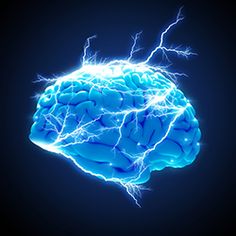Chronic pain is a pervasive issue affecting millions of people worldwide. Unlike acute pain, which typically results from injury or illness and resolves as the body heals, chronic pain persists over time, often for months or even years. It can be caused by a variety of conditions, including arthritis, fibromyalgia, neuropathy, and chronic back pain. Managing chronic pain effectively is crucial for improving quality of life and enabling individuals to maintain daily activities. Pain relievers play a significant role in this management, offering varying mechanisms of action, benefits, and risks. This article explores the role of pain relievers in managing chronic pain, examining their types, effectiveness, potential side effects, and the considerations involved in their use.
Understanding Chronic Pain
Chronic pain is a complex and multifaceted condition that extends beyond the usual healing period. It is often associated with a persistent underlying issue, such as a degenerative disease or nerve damage, which continues to signal pain even when the initial injury has healed. Chronic pain can be classified into several categories, including:
Nociceptive Pain
Nociceptive pain arises from damage or inflammation of tissues. It is typically described as a dull, aching, or throbbing pain that is often localized to a specific area. Conditions such as osteoarthritis and rheumatoid arthritis are common causes of nociceptive pain.
Neuropathic Pain
Neuropathic pain results from damage to or dysfunction of the nervous system. It is often characterized by burning, tingling, or shooting pain and may be associated with conditions such as diabetic neuropathy, postherpetic neuralgia, and multiple sclerosis.
Mixed Pain
Mixed pain involves both nociceptive and neuropathic components. For example, fibromyalgia, a condition characterized by widespread muscle pain, can include elements of both types of pain.
The Role of Pain Relievers
Pain relievers are medications used to alleviate pain and improve quality of life. They can be broadly categorized into over-the-counter (OTC) pain relievers and prescription medications. Each type has its own mechanisms of action, benefits, and risks, making it important to choose the most appropriate option based on individual needs and medical history.
Over-the-Counter Pain Relievers
OTC pain relievers are readily available without a prescription and are often used for managing mild to moderate pain. They include nonsteroidal anti-inflammatory drugs (NSAIDs) and acetaminophen.
Nonsteroidal Anti-Inflammatory Drugs (NSAIDs)
NSAIDs are commonly used to reduce pain and inflammation. They work by inhibiting the production of prostaglandins, which are chemicals that promote inflammation and pain. Common NSAIDs include ibuprofen (Advil, Motrin), naproxen (Aleve), and aspirin (Bayer).
NSAIDs are effective for managing conditions such as arthritis, menstrual cramps, and muscle aches. They can provide significant relief for nociceptive pain and are often used as a first-line treatment for chronic pain conditions. However, long-term use of NSAIDs can lead to gastrointestinal issues, such as ulcers and bleeding, and may increase the risk of cardiovascular events.
Acetaminophen
Acetaminophen (Tylenol) is another widely used OTC pain reliever. Unlike NSAIDs, acetaminophen does not have significant anti-inflammatory properties but is effective in reducing pain and fever. It works by blocking the production of prostaglandins in the brain.
Acetaminophen is often recommended for individuals who cannot tolerate NSAIDs or who have gastrointestinal issues. It is commonly used for managing headaches, muscle aches, and mild to moderate pain. However, excessive use of acetaminophen can lead to liver damage, so it is important to adhere to the recommended dosage and avoid using it in combination with other medications that contain acetaminophen.
Prescription Pain Relievers
Prescription pain relievers are typically used for more severe or chronic pain that does not respond to OTC medications. They include opioids, certain antidepressants, anticonvulsants, and topical treatments.
Opioids
Opioids are powerful pain relievers that work by binding to opioid receptors in the brain and spinal cord, blocking the transmission of pain signals. Common opioids include morphine, oxycodone, hydrocodone, and fentanyl.
While opioids can be highly effective for managing severe pain, they come with significant risks, including the potential for dependence, addiction, and overdose. Due to these risks, opioids are generally prescribed for short-term use or for individuals with severe pain who have not responded to other treatments.
Antidepressants
Certain antidepressants, such as tricyclic antidepressants (TCAs) and serotonin-norepinephrine reuptake inhibitors (SNRIs), are used to manage chronic pain, particularly neuropathic pain. These medications work by altering the levels of neurotransmitters in the brain, which can help modulate pain perception.
Antidepressants can be effective for conditions such as fibromyalgia, diabetic neuropathy, and chronic back pain. They are often used in conjunction with other pain management strategies to provide comprehensive relief.
Anticonvulsants
Anticonvulsants, such as gabapentin and pregabalin, are used to manage neuropathic pain. They work by stabilizing the electrical activity in the nervous system, which can help reduce pain signals. These medications are commonly prescribed for conditions such as postherpetic neuralgia and diabetic neuropathy.
Topical Treatments
Topical pain relievers are applied directly to the skin over the painful area. They include creams, gels, and patches containing ingredients such as menthol, capsaicin, and lidocaine. Topical treatments provide localized pain relief and are often used for conditions such as arthritis, muscle pain, and minor injuries.
Topical treatments can be an effective option for individuals who prefer to avoid systemic medications or who need additional relief alongside oral pain relievers. They have fewer systemic side effects compared to oral medications, making them a suitable choice for long-term management.
Effectiveness of Pain Relievers in Chronic Pain Management
The effectiveness of pain relievers in managing chronic pain varies depending on the type of pain, underlying condition, and individual response to the medication. Pain relievers can provide significant relief and improve quality of life, but they are often used as part of a broader pain management plan that includes other treatments and lifestyle modifications.
Acute vs. Chronic Pain Relief
While pain relievers can be effective for both acute and chronic pain, their role in chronic pain management is often more complex. Acute pain is typically short-term and responds well to pain relievers, whereas chronic pain requires ongoing management and may require a combination of medications and therapies.
For chronic pain, pain relievers are often used to manage symptoms and improve daily functioning. However, they are not a cure for the underlying condition and may need to be combined with other treatments, such as physical therapy, lifestyle changes, and alternative therapies, to achieve optimal results.
Personalized Treatment Plans
Effective chronic pain management requires a personalized treatment plan tailored to the individual’s specific needs and medical history. This plan may include a combination of pain relievers, physical therapy, psychological support, and lifestyle modifications.
Healthcare providers work closely with patients to determine the most appropriate pain relievers and adjust the treatment plan based on the individual’s response and any side effects. Regular monitoring and communication with healthcare providers are essential to ensure the effectiveness of the treatment and to address any concerns or changes in the pain experience.
Risks and Side Effects of Pain Relievers
While pain relievers can provide significant relief, they come with potential risks and side effects that need to be considered. Understanding these risks is crucial for using pain relievers safely and effectively.
Gastrointestinal Issues
NSAIDs are known to cause gastrointestinal issues, including stomach pain, heartburn, and ulcers. Long-term use of NSAIDs can increase the risk of gastrointestinal bleeding and other complications. Individuals with a history of gastrointestinal problems or those taking NSAIDs for extended periods should be monitored closely for any adverse effects.
Liver Damage
Acetaminophen, while effective for pain and fever relief, can lead to liver damage if used excessively or in combination with other medications containing acetaminophen. It is important to adhere to the recommended dosage and avoid exceeding the maximum daily limit to prevent liver-related complications.
Dependence and Addiction
Opioids, while effective for severe pain, carry the risk of dependence and addiction. Prolonged use of opioids can lead to physical dependence, where the body becomes accustomed to the medication and experiences withdrawal symptoms if it is stopped abruptly. It is essential to use opioids under the guidance of a healthcare provider and to follow the prescribed dosage to minimize the risk of addiction.
Drug Interactions
Pain relievers can interact with other medications, potentially reducing their effectiveness or increasing the risk of side effects. For example, NSAIDs can interact with blood thinners, increasing the risk of bleeding, while acetaminophen can interact with certain medications used to treat epilepsy and tuberculosis. It is important to inform healthcare providers about all medications and supplements being taken to avoid potential interactions.
Allergic Reactions
Allergic reactions to pain relievers are rare but can occur. Symptoms may include rash, itching, swelling, dizziness, and difficulty breathing. If an allergic reaction is suspected, it is important to discontinue the medication and seek medical attention immediately.
Strategies for Safe Use of Pain Relievers
To use pain relievers safely and effectively, it is important to follow certain guidelines and best practices. These strategies can help minimize risks and ensure optimal pain management.
Adherence to Dosage Instructions
Always follow the dosage instructions provided by the healthcare provider or on the medication label. Do not exceed the recommended dose or use the medication for longer than advised. Adhering to the prescribed dosage helps reduce the risk of side effects and complications.
Regular Monitoring
Regular monitoring of the effectiveness and side effects of pain relievers is essential for effective chronic pain management. Healthcare providers may adjust the treatment plan based on the individual’s response and any changes in the pain experience. It is important to communicate any concerns or new symptoms to the healthcare provider.
Avoiding Drug Interactions
Be aware of potential drug interactions when taking multiple medications. Inform healthcare providers about all medications, supplements, and over-the-counter products being used to avoid interactions and ensure safe and effective pain management.
Using Non-Pharmacological Approaches
Incorporating non-pharmacological approaches, such as physical therapy, lifestyle changes, and alternative therapies, can complement the use of pain relievers and provide additional pain relief. These approaches can help address the underlying causes of chronic pain and improve overall well-being.
Consulting Healthcare Providers
Consulting healthcare providers before starting or adjusting any pain reliever regimen is crucial for ensuring safe and effective use. Healthcare providers can help determine the most appropriate pain relievers, adjust the treatment plan based on individual needs, and address any concerns or side effects.
Conclusion
Pain relievers play a vital role in managing chronic pain, offering varying mechanisms of action, benefits, and risks. From over-the-counter options like NSAIDs and acetaminophen to prescription medications such as opioids and anticonvulsants, pain relievers can provide significant relief and improve quality of life. However, their use requires careful consideration of potential side effects, drug interactions, and individual needs.
Effective chronic pain management often involves a combination of pain relievers, non-pharmacological approaches, and lifestyle modifications. By understanding the role of pain relievers and working closely with healthcare providers, individuals can develop personalized treatment plans that address their specific pain management needs and enhance overall well-being.




